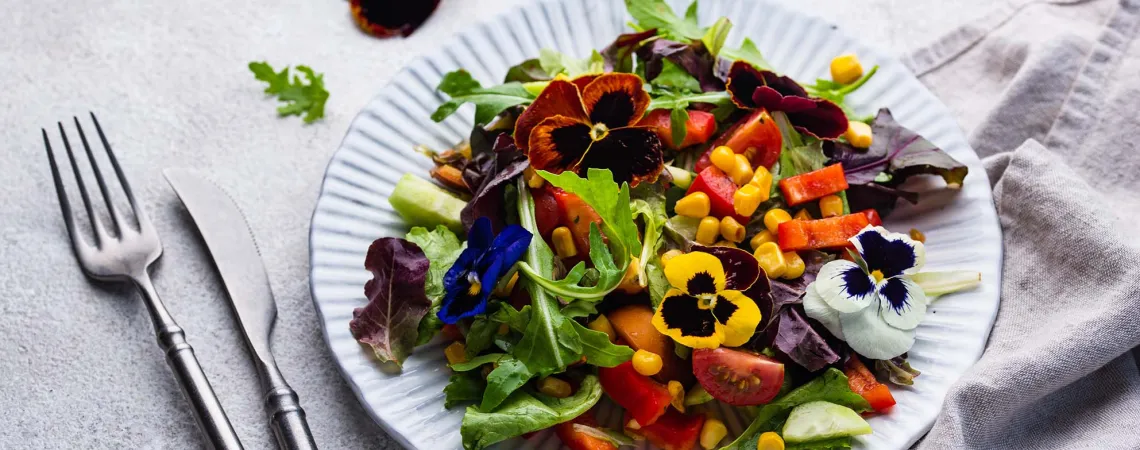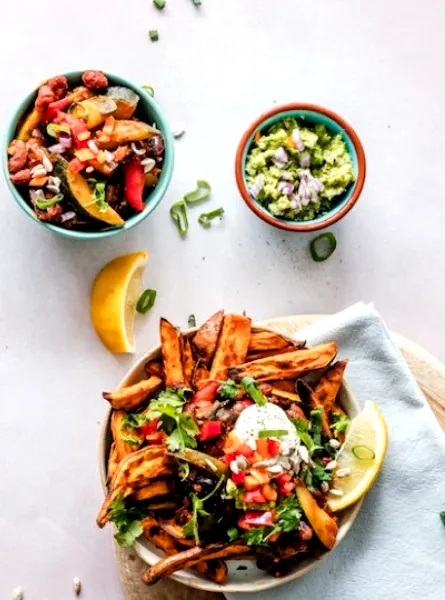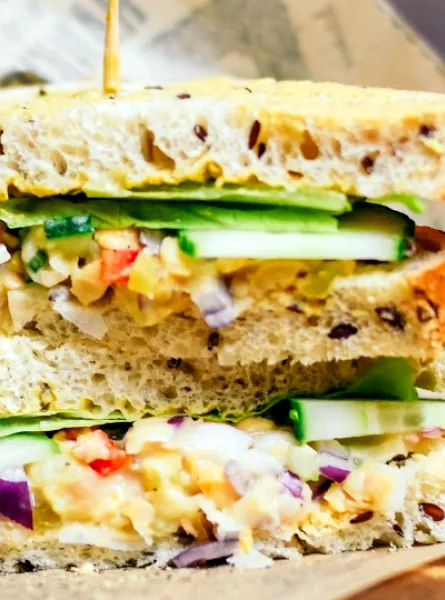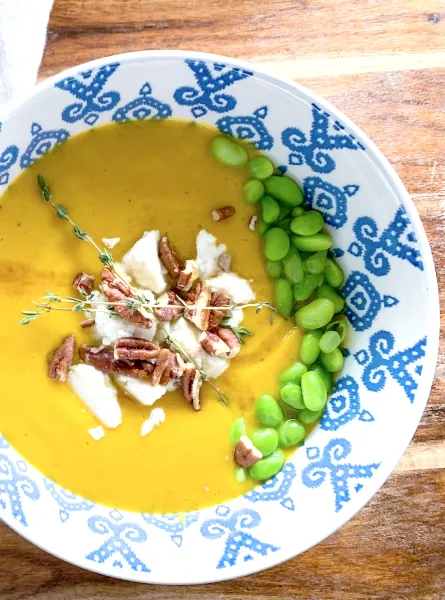
Edible flowers are making a strong comeback in modern gastronomy. Not only do they add a touch of colour and elegance to your dishes, but they also offer interesting nutritional benefits. Discover how these flowers can enrich your recipes and surprise your guests while adding beneficial nutrients to your diet.
Varieties of Edible Flowers
There is a wide range of edible flowers you can use to enhance your dishes. Here are some of the most popular varieties:
1. Nasturtiums
With their peppery flavour, their leaves are perfect for salads and meat dishes. Nasturtium capers are excellent in dishes like spicy trout tartare with dill (1).
2. Pansies
Sweet and slightly sugary, they beautifully decorate desserts and drinks. Use this flower to garnish your breakfasts, whether it’s a yogurt or vanilla chia pudding (1).
3. Borage
With its cucumber taste, it pairs well with refreshing drinks and salads. Borage is perfect for decorating summer cocktails like a grape, melon, and lime mocktail (1).
4. Lavender
Increasingly popular, lavender is ideal for flavouring dishes like cookies or ice cream. It’s also delicious in syrup for teas and coffees. The choco-lavender breakfast bowl is perfect for enjoying the delightful flavours of this flower (1).
5. Hibiscus
Its tangy, fruity taste is perfect for iced teas and cocktails. This flower is also found in some kombucha recipes, which you can find in our Margarita kombucha mocktail (2).
6. Tangerine Marigold
Tangerine marigold can add a fresh citrus touch and a subtle sweetness to your salads, desserts, and infusions. It can also be used to flavour grilled dishes like this air fryer orange-rosemary haddock recipe (2).
The Benefits of Edible Flowers
Edible flowers are not only beautiful, but they are also beneficial for your health.
1. Source of Antioxidants
Many edible flowers, such as nasturtiums and pansies, contain antioxidants that help protect the body against cellular damage (3).
2. Source of Vitamins
Some flowers, like violets, are rich in vitamins A and C, essential for good health. Vitamin A contributes to better vision and a strong immune system, while vitamin C helps protect the body against infections (3).
3. Source of Minerals
Certain edible flowers contain calcium, potassium, and magnesium. These minerals are essential for bone health, proper nervous system function, and blood pressure regulation (3).
4. Phytochemicals
They also contain various phytochemicals, such as flavonoids, anthocyanins, and carotenoids. These compounds have anti-inflammatory, antioxidant, and anti-carcinogenic properties (3).
Caution with Toxic Flowers
When consuming flowers, it is crucial to avoid certain toxic varieties that can cause severe health issues. Here are some toxic flowers to avoid:
1. Lilies
Ingesting lilies can cause severe gastrointestinal distress and kidney failure, especially dangerous for pets.
2. Foxglove
Foxglove contains cardiac glycosides, which can cause nausea, vomiting, diarrhea, and serious heart problems.
3. Oleander
The entire plant is extremely toxic. Ingestion can lead to abdominal pain, nausea, vomiting, and potentially fatal heart issues.
4. Star Jasmine
Star jasmine can cause nausea, vomiting, and abdominal pain.
Tips for Using Edible Flowers
1. Grow Your Own Flowers
If possible, grow your own flowers to ensure they haven’t been treated with pesticides. Planting them yourself in the spring is also a more economical choice.
2. Read the Label Carefully
If you buy them, make sure they are specifically labelled as edible (4).
3. Clean Them Thoroughly
Gently rinse the flowers in cold water to remove any dirt or insects.
4. Add Them at the Last Minute
To preserve their freshness and colour, add the flowers to your dishes just before serving.
5. Store Them Properly
To preserve unused flowers, you can hang them upside down in a dry, dark place, candy them with egg white and sugar, or press them between paper towels in a thick book.
Learn More About Aesthetic Nutrition!
Want to learn more about aesthetic nutrition and how to optimize your diet for optimal health? Schedule an appointment with a registered dietitian nutritionist from TeamNutrition today.
References
- Kohlman, R. (2024). 15 Flowers You can Eat. Canadian Food Focus. https://canadianfoodfocus.org/in-your-kitchen/edible-flowers/?gad_source=1&gclid=CjwKCAjwm_SzBhAsEiwAXE2Cv2C2LQY0CoEviVDLtguVmj8jHqk91HtpfT7xUKam2mIFr5exza_dohoCnNoQAvD_BwE
- BienManger.com. (n.d.). Utilisation de l'Hibiscus. https://www.bienmanger.com/1C1606_Utilisation_Hibiscus.html
- Benvenuti, S., & Mazzoncini, M. (2021). The Biodiversity of Edible Flowers: Discovering New Tastes and New Health Benefits. Frontiers in Plant Science, 11, 569499. https://www.frontiersin.org/journals/plant-science/articles/10.3389/fpls.2020.569499/full
- Espace pour la vie. (n.d.). Principales fleurs comestibles. https://espacepourlavie.ca/principales-fleurs-comestibles






